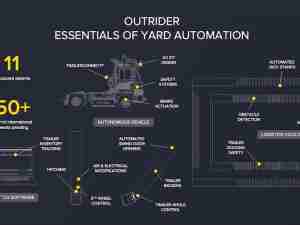A recent multi-fatality traffic accident outside Denver has focused widespread attention on big-rig safety. To produce safer drivers, ATS’s John Kearney urges the trucking industry to adopt mandatory simulator training.
St. Petersburg, Fla. - Trucker safety and training has been at the forefront of a national discussion since late April, when a long-haul truck driver caused a fatal accident on a Colorado interstate. The driver was charged with three dozen felony counts and could face decades in prison.
“Exactly what happened and how remains a matter for the courts to determine,” said John Kearney, CEO of Advanced Training Systems, a leading designer and manufacturer of virtual simulators for truck driver training. “This tragic incident makes clear the importance of stringent enforcement of truck safety regulations and the best possible training for operators.”
The accident, which occurred on Interstate 70 in the city of Lakewood, west of Denver, involved 28 vehicles. According to an arrest warrant affidavit, the driver told police he was going 45 mph when his brakes failed on a downhill grade, causing the rig to accelerate. The driver, who has a valid commercial license issued in Texas, reportedly has no prior history of traffic offenses.1 His employer, Castellano 03 Trucking LLC of Houston, is authorized for interstate transport of general freight and other cargo. Federal Motor Carrier Safety Administration records show that the company has had 19 vehicle inspections over the past two years, and that 30 violations were found by inspectors, among them problems with brakes.
No matter what led to the accident, Kearney said it illustrates both the importance of the trucking industry and the environment in which it operates. According to statistics calculated and tracked by American trucking associations, over 70 percent of the nation’s total freight moves by truck.
“Trucking is thus a linchpin of the economy,” Kearney said. “It is also an industry under intense pressure to manage explosive growth within tight financial margins.”
These pressures are exacerbated by a worsening shortage of drivers. Just to keep up with current demand, it is estimated that the U.S. trucking industry needs another 50,000 fulltime drivers, and that the shortage is increasing.
Trucking companies often train their own drivers, which compounds their burden, Kearney said. These companies are tasked with making sure their drivers are well trained and safe while also getting them on the road as quickly as possible, he said.
Long-haul truck operators are the professionals of the highway, similar to commercial pilots among general aviation enthusiasts. In command of a vehicle that can weigh up to 80,000 pounds, they must anticipate and safely react to the behavior of other drivers.
Just as in the airline industry, electronic simulators can build and sharpen the skills necessary to do that—with plenty of margin for error. Unlike on a busy highway, simulators allow mistakes that can be corrected.
“It’s a key component of training, but not the only component,” Kearney said. “Classroom instruction still is essential, along with behind-the-wheel training with an experienced operator in a real truck. This is exactly the mix of mandatory training modalities used by the airline industry, which also should be mandatory in the trucking industry. As delivery schedules shorten, highway congestion and the demand for highly skilled truck operators will only increase. It’s to everyone’s benefit to make sure those drivers have had the best training possible.”








